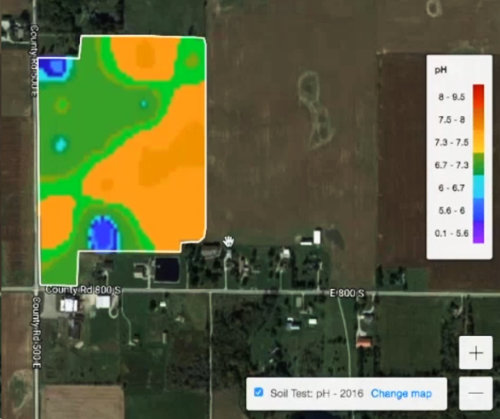Soil sampling is a key step to making effective farm management and soil fertility decisions.

Soil sampling helps:
- Evaluate the pH and nutrient status of a field.
- Base lime and fertilizer management decisions for optimal crop production.
Thorough soil sampling also helps farmers to develop management zones and prescription maps in precision agriculture. Which further increases the accuracy of rate and placement of necessary inputs.
Soil sampling strategies
There are different strategies for soil sampling. Depending on the variability of the field, the level of detail needed, and the cost of analysis. Some common strategies are:
- Whole field sampling: This strategy uses one composite sample to represent the whole field. This is the simplest and cheapest method. But it may not capture the field variations in soil properties and yield potential.
- Zone sampling: The field is subdivided into zones depending on soil type, past management or cropping history, or topography. Each zone is sampled separately and represented by a composite sample of 10 to 20 sample-pulls. This method will account for some of the spatial variability in the field. Therefore, this method allows for variable rate application of inputs.
- Grid sampling: The farm field is split into uniform grid sections, usually ranging from 0.5 to 5 acres. Each grid section is sampled separately and represented by a composite sample of 10 to 20 sample-pulls. This method will capture more of the fine-scale variability in the field. And allow for more precise variable rate application of inputs and seeding rates
Sampling depth and tools
The sampling depth is another crucial factor to consider when soil sampling. The standard depth for most field crops is eight inches. But different row and permanent crops, management styles, and goals may require different depths. For example, turfgrass and lawn should be sampled at 4 to 6 inches. But plowed soils should be sampled to the depth of plowing. And no-till or reduced-tillage systems should be sampled at 2 to 4 inches for pH and lime recommendations and at 8 inches for fertility analysis.

The sampling tool should be appropriate for the soil type and depth and should collect soil samples perpendicular to the soil surface, not at an angle. Some common tools are soil probes, augers, spades, or sampling tubes. Place the soil sample in a clean bucket, mix thoroughly, and then take one pint of soil as a representative sample.
Soil sampling is a valuable practice that can help farmers optimize their crop production, reduce their input costs, and protect the environment. Sampling should be done regularly, preferably every year or twice a year before crop planting. Of course, it will depend on the crop rotation and nutrient management plan. We also recommend performing the sampling approximately the same time in the year every year. This way it will improve overall result accuracy due to seasonal fluctuations.
Soil sample result record keeping
Checking the soil for deficiencies is critical. Once we know what soil needs, we make the application plan and implement it. As the last step, we recommend implementing some kind of system that allows you to manage and record the soil test results. It can be beneficial to look at the final result (yield) along with all other information such as inputs, spray, irrigations, completed task, soil sample results etc. This way farmers can make well informed decisions on what works and identify areas which need further improvements.